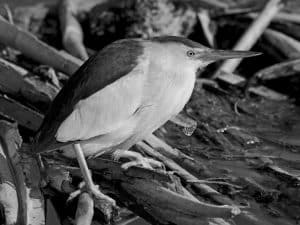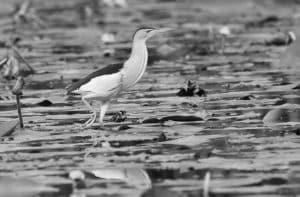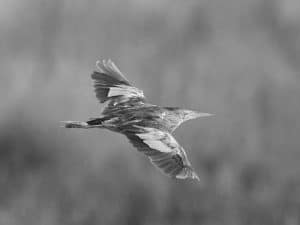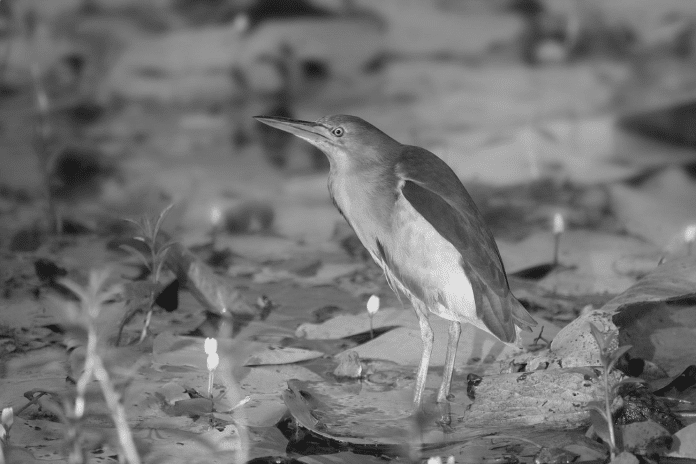Introduction to the Little Bittern
Welcome to the enchanting world of the little bittern, a small but captivating bird that graces the waterways of Tanzania. The little bittern in Tanzania, scientifically known as Ixobrychus minutus, is a member of the heron family and is renowned for its elusive nature and striking appearance. Measuring only around 11 inches in length, this diminutive bird possesses a remarkable beauty that has captivated birdwatchers and nature enthusiasts around the world.

The little bittern’s plumage is a blend of rich chestnut, deep black, and creamy white, creating a striking contrast that makes it an exquisite sight to behold. Its slender neck and long bill add to its distinctive allure, making it a sought-after subject for birdwatchers and wildlife photographers. Despite its small size, the little bittern exudes an air of elegance and grace as it navigates the reed beds and wetlands, where it is often found hunting for prey.
The little bittern’s call is a soft, low-pitched “kow” or “kak-kak,” which adds to the mystique of encountering this elusive bird in its natural habitat. Its secretive nature and habit of remaining concealed within dense vegetation make spotting the little bittern a thrilling and rewarding experience for those who are fortunate enough to observe it in the wild.
Habitat of the Little Bittern in Tanzania
The little bittern is primarily found in the wetlands, marshes, and reed beds of Tanzania, where it seeks out shallow, vegetated water bodies for foraging and nesting. These habitats provide the perfect cover for the little bittern, allowing it to blend seamlessly into the surroundings while preying on small fish, amphibians, and insects. The dense vegetation not only offers protection from predators but also serves as a strategic vantage point for the little bittern to launch its swift and precise attacks on unsuspecting prey.
The extensive network of rivers, lakes, and swamps in Tanzania offers a diverse range of habitats for the little bittern, allowing it to thrive in varied environments across the country. From the iconic Serengeti to the lesser-explored wetlands of the Selous Game Reserve, the little bittern has adapted to the unique characteristics of each location, demonstrating its remarkable versatility and resilience in the face of changing landscapes.
During the breeding season, the little bittern constructs its nest among the dense reeds, creating a secure haven for its offspring. The abundance of suitable nesting sites in Tanzania’s wetlands plays a crucial role in sustaining the little bittern population, ensuring the continuation of this captivating species for generations to come.
Behavior and Feeding Habits of the Little Bittern
The little bittern is a master of stealth and patience, employing a range of hunting techniques to secure its meals amidst the labyrinth of reeds and water plants. With its neck extended and body held motionless, the little bittern patiently waits for its prey to come within striking distance before swiftly plunging its bill into the water with remarkable precision. Its agile and calculated movements reflect the expertise honed through countless hours of honing its hunting skills in the watery maze of its habitat.
In addition to its adept fishing abilities, the little bittern also preys on insects and small amphibians, broadening its diet to adapt to the seasonal fluctuations in food availability. Its resourcefulness and adaptability enable the little bittern to thrive in the dynamic and ever-changing ecosystem of Tanzania’s waterways, showcasing its resilience in the face of environmental challenges.
The little bittern’s behavior is a fascinating blend of solitude and social interaction, as it navigates the intricate network of water channels while maintaining a cautious distance from potential threats. Its elegant movements and subtle vocalizations add to the allure of observing this enigmatic bird, offering a glimpse into the intricate web of interactions that shape its daily life in the wetlands of Tanzania.
Conservation Status of the Little Bittern in Tanzania

Despite its remarkable adaptability, the little bittern faces a range of conservation challenges in Tanzania, stemming from habitat loss, human disturbance, and the impacts of climate change. The degradation of wetlands and the unsustainable use of water resources pose significant threats to the little bittern’s natural habitats, placing the species at risk of population decline and local extinctions.
Efforts to raise awareness about the conservation status of the little bittern and its critical role in the ecosystem are essential for fostering public support and galvanizing action to protect its habitats. Collaborative initiatives involving local communities, conservation organizations, and government agencies are crucial for implementing sustainable management practices that safeguard the little bittern and its wetland habitats for future generations.
By recognizing the intrinsic value of the little bittern as a vital component of Tanzania’s natural heritage, conservationists and stakeholders can work together to develop and implement effective conservation strategies that address the root causes of habitat degradation and promote the sustainable coexistence of human activities and wildlife in the wetlands.
Best Places to Spot the Little Bittern in Tanzania
Tanzania offers a wealth of opportunities for birdwatchers and wildlife enthusiasts to observe the little bittern in its natural habitat, with several notable locations renowned for their abundance of this captivating species. The Selous Game Reserve, with its expansive wetlands and riverine systems, provides a prime setting for encountering the little bittern amidst the scenic beauty of the reserve’s diverse landscapes.
The iconic Serengeti National Park, famous for its sweeping savannahs and teeming wildlife, is also home to a thriving population of little bitterns, offering visitors the chance to witness these elusive birds against the backdrop of the park’s iconic scenery. The shallow lakes and marshes of the Manyara and Natron regions are additional hotspots for little bittern sightings, providing an immersive experience in the heart of Tanzania’s wetland ecosystems.
For those seeking a more off-the-beaten-path adventure, the lesser-explored wetlands of the Kilombero Valley and the Udzungwa Mountains National Park offer a glimpse into the hidden world of the little bittern, where the serenity of the natural surroundings enhances the thrill of encountering this elusive bird.
Tips for Birdwatching and Photographing the Little Bittern
When embarking on a birdwatching expedition to spot the little bittern in Tanzania, it is essential to exercise patience and attentiveness, as these birds are adept at remaining concealed within the dense vegetation of their wetland habitats. The early morning and late afternoon hours are prime times for little bittern sightings, as the birds are often more active during these periods, engaging in hunting and feeding behaviors that offer opportunities for observation and photography.
Utilizing binoculars or a spotting scope can greatly enhance the chances of spotting the little bittern amidst the reeds and waterways, allowing for a closer and more detailed view of its elegant plumage and subtle movements. Remaining still and quiet while observing the little bittern is crucial for minimizing disturbances and maximizing the potential for prolonged and rewarding encounters with this captivating species.
Photographing the little bittern presents a delightful challenge for wildlife photographers, as its elusive nature and striking appearance create an irresistible subject for capturing moments of natural beauty in the wetlands of Tanzania. Patience and persistence are key virtues for photography enthusiasts seeking to immortalize the grace and allure of the little bittern through their lens, with the potential for stunning compositions that showcase the bird in its natural environment.
Interesting Facts about the Little Bittern

- Mating Rituals: During the breeding season, male little bitterns perform elaborate courtship displays, including aerial acrobatics and vocalizations, to attract mates and establish territories within their wetland habitats.
- Camouflage Abilities: The little bittern’s plumage provides exceptional camouflage, allowing it to blend seamlessly into the reed beds and marshy vegetation, effectively concealing it from both predators and potential prey.
- Migration Patterns: While some populations of little bitterns are sedentary and remain in their territories year-round, others undertake seasonal migrations, traveling significant distances to reach their wintering grounds and breeding sites.
- Nesting Behavior: Female little bitterns construct intricate nests among the dense reeds, utilizing plant materials and natural fibers to create a secure and concealed structure for incubating their eggs and rearing their young.
- Vocalizations: In addition to its distinctive “kow” or “kak-kak” calls, the little bittern also produces a variety of vocalizations, including soft grunts and croaks, to communicate with its mate and signal territorial boundaries.
Little Bittern’s Role in the Ecosystem of Tanzania’s Waterways
The little bittern plays an integral role in the delicate balance of Tanzania’s waterways, contributing to the ecological dynamics of wetland ecosystems through its foraging activities, predation on small aquatic organisms, and potential influences on prey populations. As an apex predator within its microhabitat, the little bittern helps regulate the abundance and behavior of its prey species, shaping the intricate web of interactions that define the biodiversity of Tanzania’s wetlands.
By exerting selective pressure on the populations of fish, amphibians, and invertebrates that constitute its diet, the little bittern contributes to the maintenance of ecological stability and resilience within the wetland food web. Its presence and foraging behaviors influence the distribution and abundance of aquatic organisms, shaping the dynamics of energy flow and nutrient cycling that sustain the diverse life forms inhabiting Tanzania’s waterways.
Furthermore, the graceful movements and subtle vocalizations of the little bittern add to the aesthetic and cultural significance of Tanzania’s wetlands, enriching the sensory experience of visitors and locals alike as they immerse themselves in the natural beauty and tranquility of these unique landscapes. The little bittern’s role as a symbol of the interconnectedness between wildlife and the environment underscores its importance as a flagship species for promoting the conservation and sustainable management of Tanzania’s waterways.
Efforts for the Preservation of the Little Bittern in Tanzania
Conservation initiatives focused on the preservation of the little bittern and its wetland habitats are crucial for ensuring the long-term survival of this captivating species in Tanzania. Collaborative efforts involving government agencies, conservation organizations, and local communities are essential for implementing effective conservation strategies that address the key threats facing the little bittern and promote the sustainable coexistence of human activities and wildlife in the wetlands.
Key conservation actions include the designation and management of protected areas that encompass critical little bittern habitats, providing sanctuaries where the species can thrive free from the pressures of habitat loss and degradation. These protected areas serve as focal points for research, monitoring, and community engagement, fostering a shared sense of stewardship and responsibility for safeguarding the little bittern and the ecological integrity of Tanzania’s waterways.
Public awareness and education programs play a vital role in fostering appreciation for the little bittern and its wetland habitats, inspiring a sense of pride and connection to the natural heritage of Tanzania. By engaging local communities and stakeholders in conservation efforts, these programs promote the sustainable use of natural resources and the adoption of practices that minimize the impacts of human activities on the little bittern and its habitats.
Conclusion
In conclusion, the little bittern stands as a tiny wonder of Tanzania’s waterways, captivating the imagination of all who have the privilege of encountering this elusive and elegant bird in its natural habitat. From its enchanting plumage and graceful movements to its vital role in the ecological dynamics of wetland ecosystems, the little bittern embodies the rich tapestry of biodiversity that defines Tanzania’s natural heritage.
As we celebrate the beauty and resilience of the little bittern, it is imperative that we recognize the urgency of conserving its wetland habitats and promoting sustainable coexistence between human activities and wildlife. By fostering a shared commitment to the preservation of the little bittern and the ecosystems it inhabits, we can ensure that future generations will continue to be inspired by the timeless allure of this tiny wonder of Tanzania’s waterways.


































